Note: We don't know the substance used for this particular painted portrait miniature. Also, we are not qualified to comment on the condition. Frame is approximately 4 1/2 x 3 3/8 inches with the bail. (Approximately 4 x 3 3/8 inches without the bail.) The opening in the frame is approximately 3 x 2 7/16 inches. "The term 'miniature' derives from the Italian miniatura, 'manuscript illumination or small picture'... Portrait miniatures first appeared in European royal courts in the 16th century, and flourished during the reign of Queen Elizabeth I. By the 18th century their popularity was widespread, with leading miniature painters establishing themselves among the wealthy elite in London, Bath and Dublin. Miniatures were particularly sought after by soldiers and sailors who wanted to leave their loved ones with a likeness to cherish in their absence... As ivory became more accessible and affordable, the practice of painting on ivory was adopted outside of Italy...Ivory remained the most common medium for portrait miniatures until its decline towards the end of the 19th century... In the 18th century enamel came to be seen as a more robust alternative to ivory. The increasingly popular portrait enamels — painted on metal, usually gold or copper — were fired in a kiln and required a great level of skill and time to execute... In the 16th and 17th centuries portrait miniatures primarily served as diplomatic gifts; tokens of love, which were sometimes exchanged during marriage negotiations; or mementoes to commemorate births or deaths. Miniatures dating to this period often bear emblems and impresa (heraldic devices), symbolising courtly love, melancholy or pageantry. By the 18th century miniatures were often worn as jewellery, on a gold chain around the neck, or set into a ring or bracelet. Sometimes they would contain a lock of hair sealed in the reverse. They were also mounted into objects of vertu... It's important to note that not all portrait miniatures are signed, but those that aren't are still considered autograph works. This means that a collector should not be put off by the absence of a signature. A signature, date and inscription, however, can help us to know more about the artist, sitter and date of execution. If a portrait miniature is undated, the hairstyle and dress worn by the sitter are useful clues in the identification process." (source: https://www.christies.com/features/a-brief-introduction-to-portrait-miniatures-9858-1.aspx) NO RESERVE
Note: We don't know the substance used for this particular painted portrait miniature. Also, we are not qualified to comment on the condition. Frame is approximately 4 1/2 x 3 3/8 inches with the bail. (Approximately 4 x 3 3/8 inches without the bail.) The opening in the frame is approximately 3 x 2 7/16 inches. "The term 'miniature' derives from the Italian miniatura, 'manuscript illumination or small picture'... Portrait miniatures first appeared in European royal courts in the 16th century, and flourished during the reign of Queen Elizabeth I. By the 18th century their popularity was widespread, with leading miniature painters establishing themselves among the wealthy elite in London, Bath and Dublin. Miniatures were particularly sought after by soldiers and sailors who wanted to leave their loved ones with a likeness to cherish in their absence... As ivory became more accessible and affordable, the practice of painting on ivory was adopted outside of Italy...Ivory remained the most common medium for portrait miniatures until its decline towards the end of the 19th century... In the 18th century enamel came to be seen as a more robust alternative to ivory. The increasingly popular portrait enamels — painted on metal, usually gold or copper — were fired in a kiln and required a great level of skill and time to execute... In the 16th and 17th centuries portrait miniatures primarily served as diplomatic gifts; tokens of love, which were sometimes exchanged during marriage negotiations; or mementoes to commemorate births or deaths. Miniatures dating to this period often bear emblems and impresa (heraldic devices), symbolising courtly love, melancholy or pageantry. By the 18th century miniatures were often worn as jewellery, on a gold chain around the neck, or set into a ring or bracelet. Sometimes they would contain a lock of hair sealed in the reverse. They were also mounted into objects of vertu... It's important to note that not all portrait miniatures are signed, but those that aren't are still considered autograph works. This means that a collector should not be put off by the absence of a signature. A signature, date and inscription, however, can help us to know more about the artist, sitter and date of execution. If a portrait miniature is undated, the hairstyle and dress worn by the sitter are useful clues in the identification process." (source: https://www.christies.com/features/a-brief-introduction-to-portrait-miniatures-9858-1.aspx) NO RESERVE


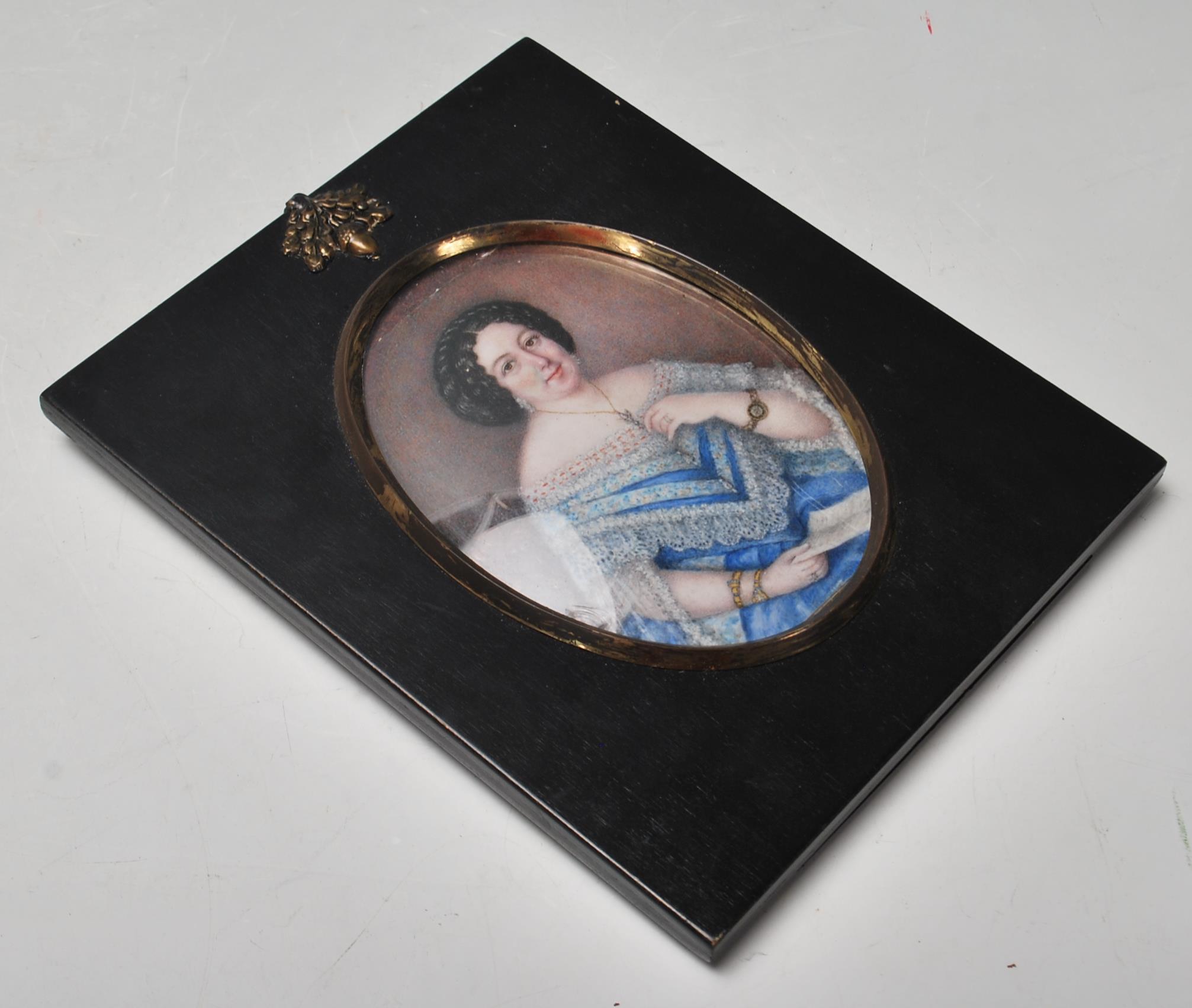
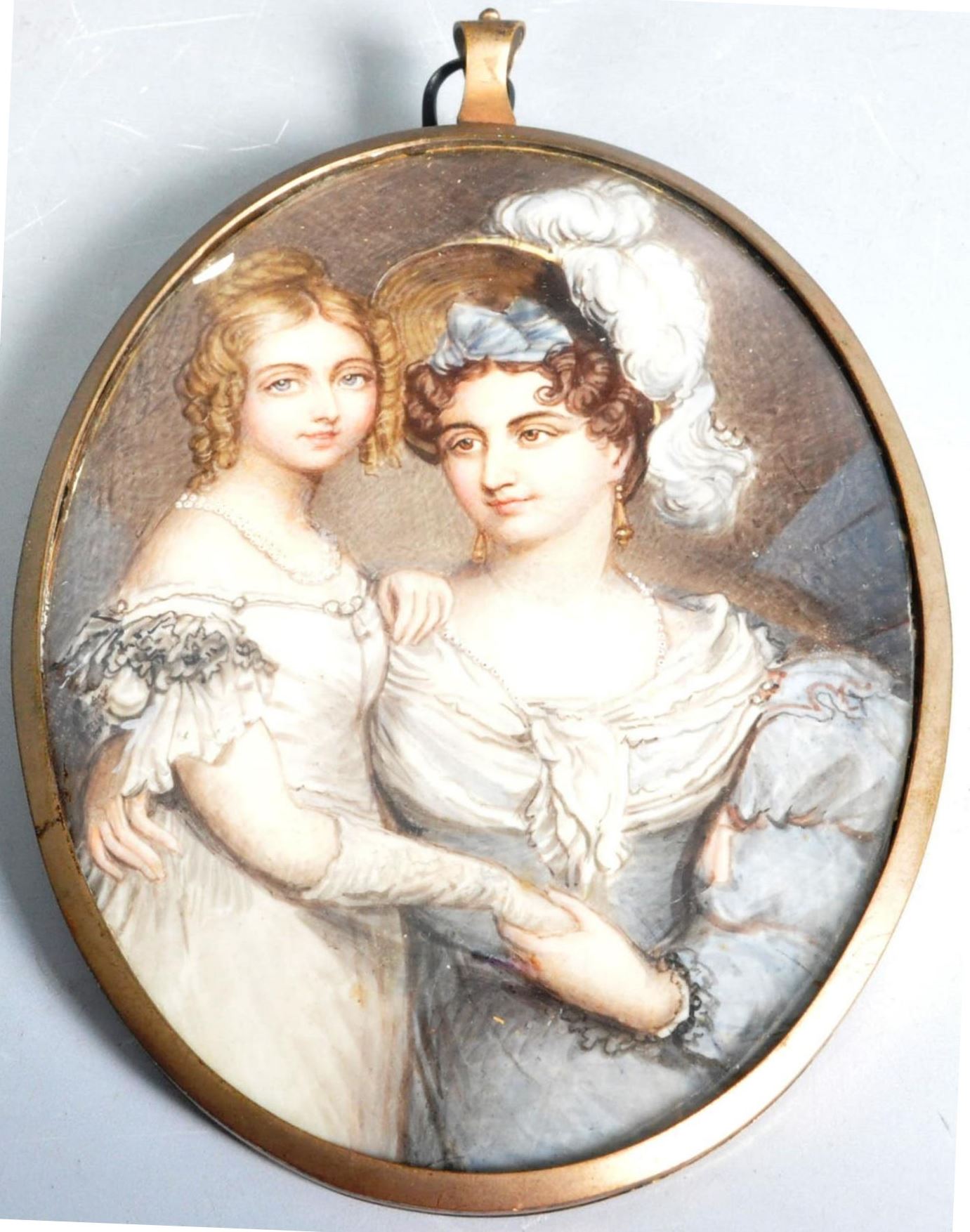
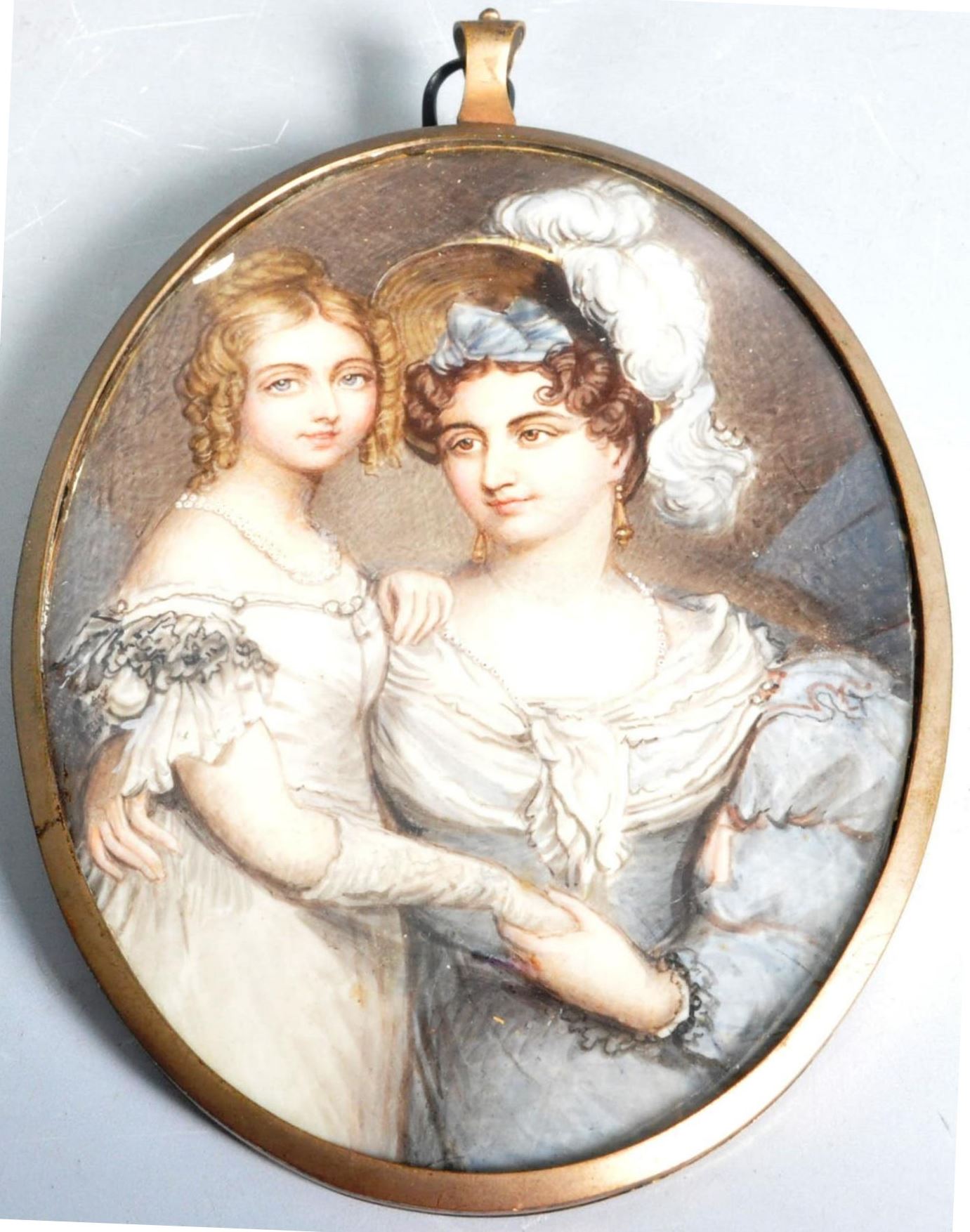
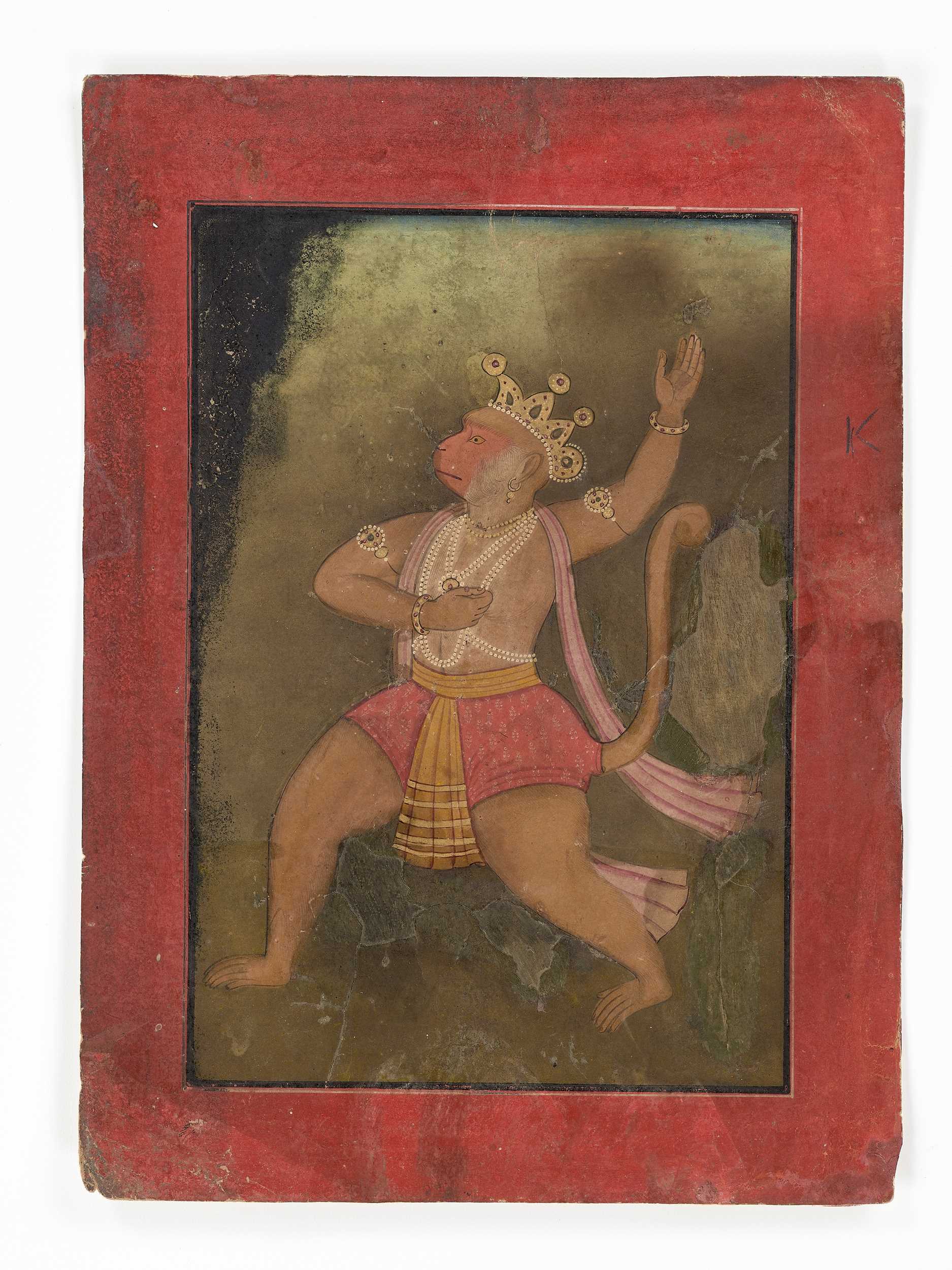


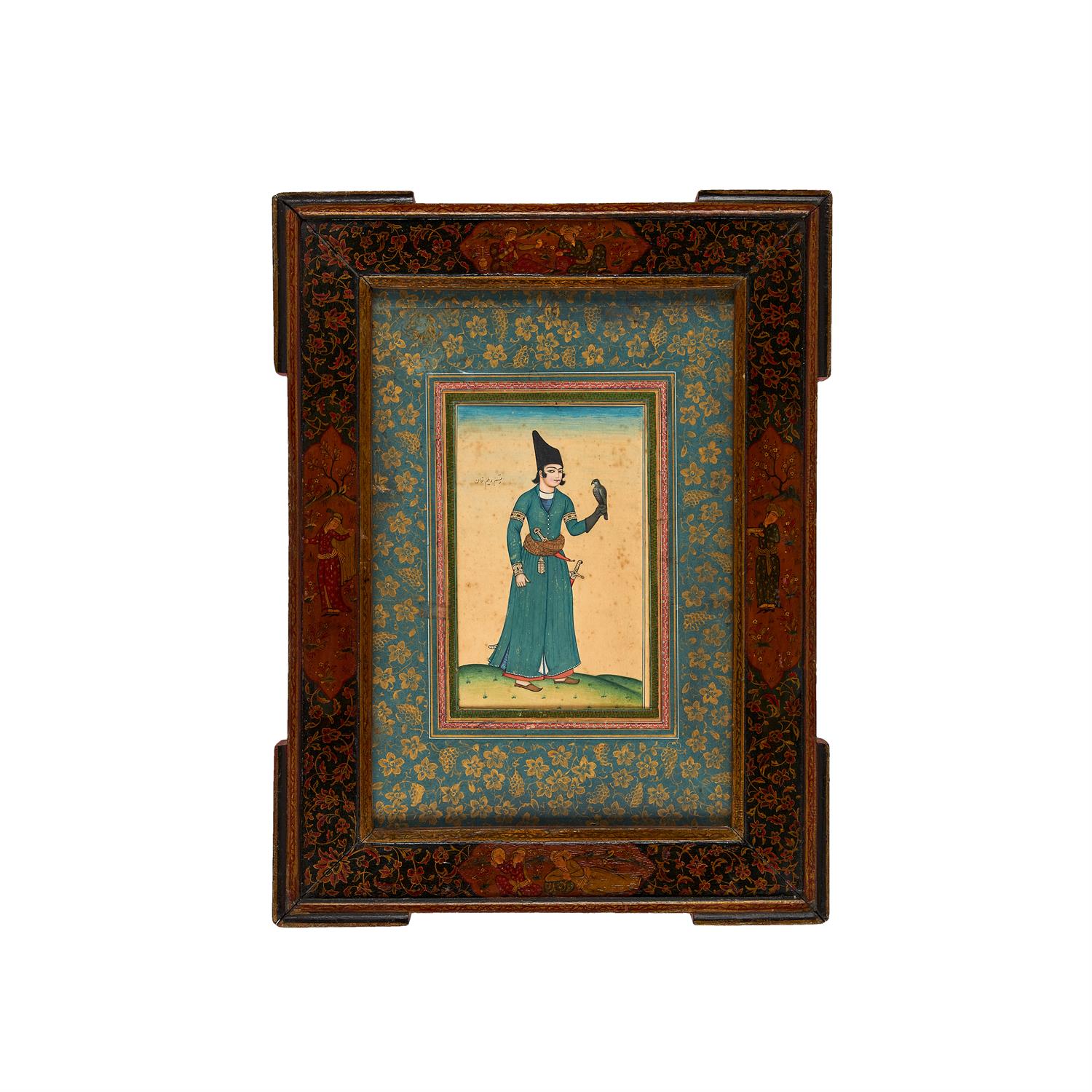
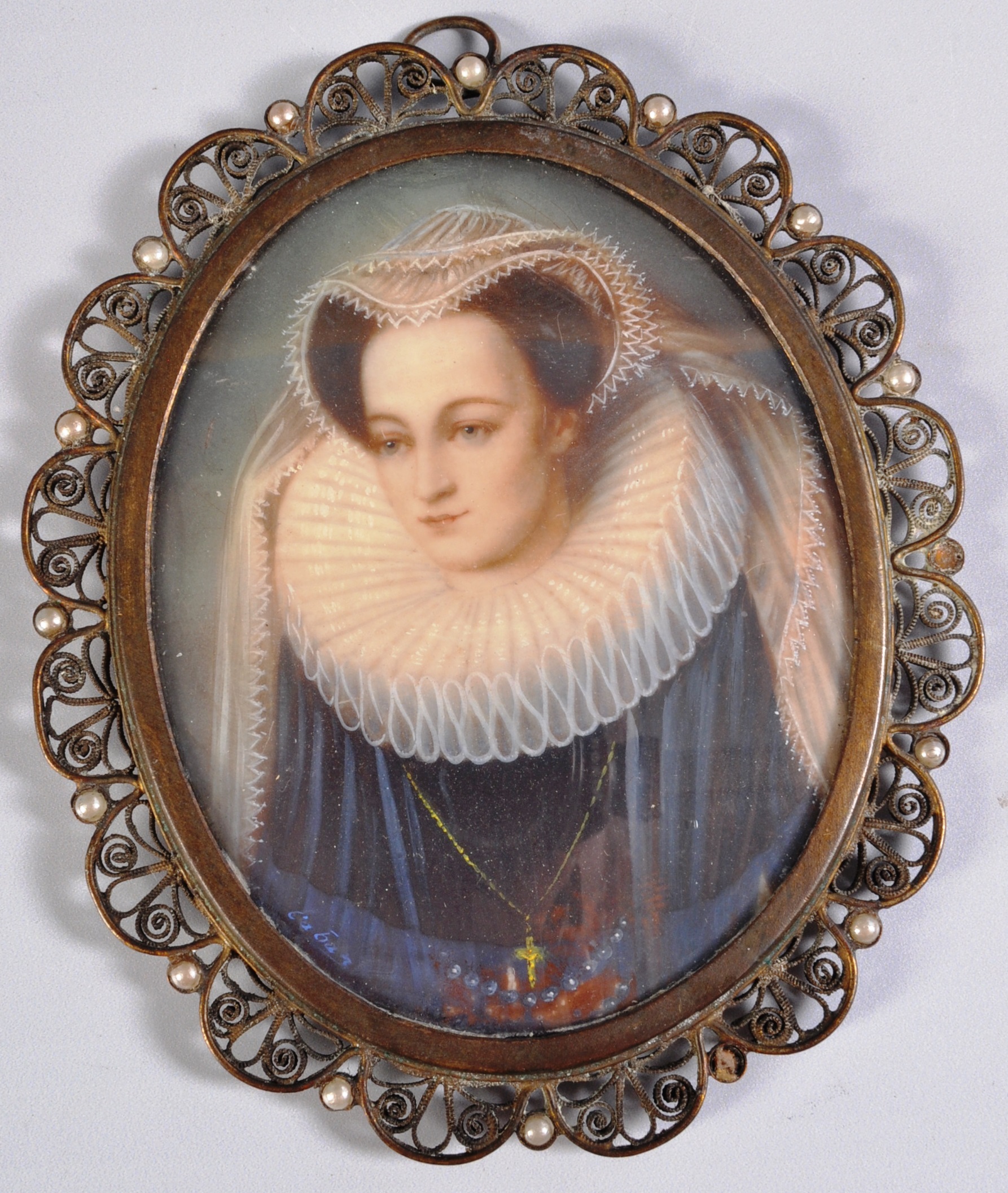
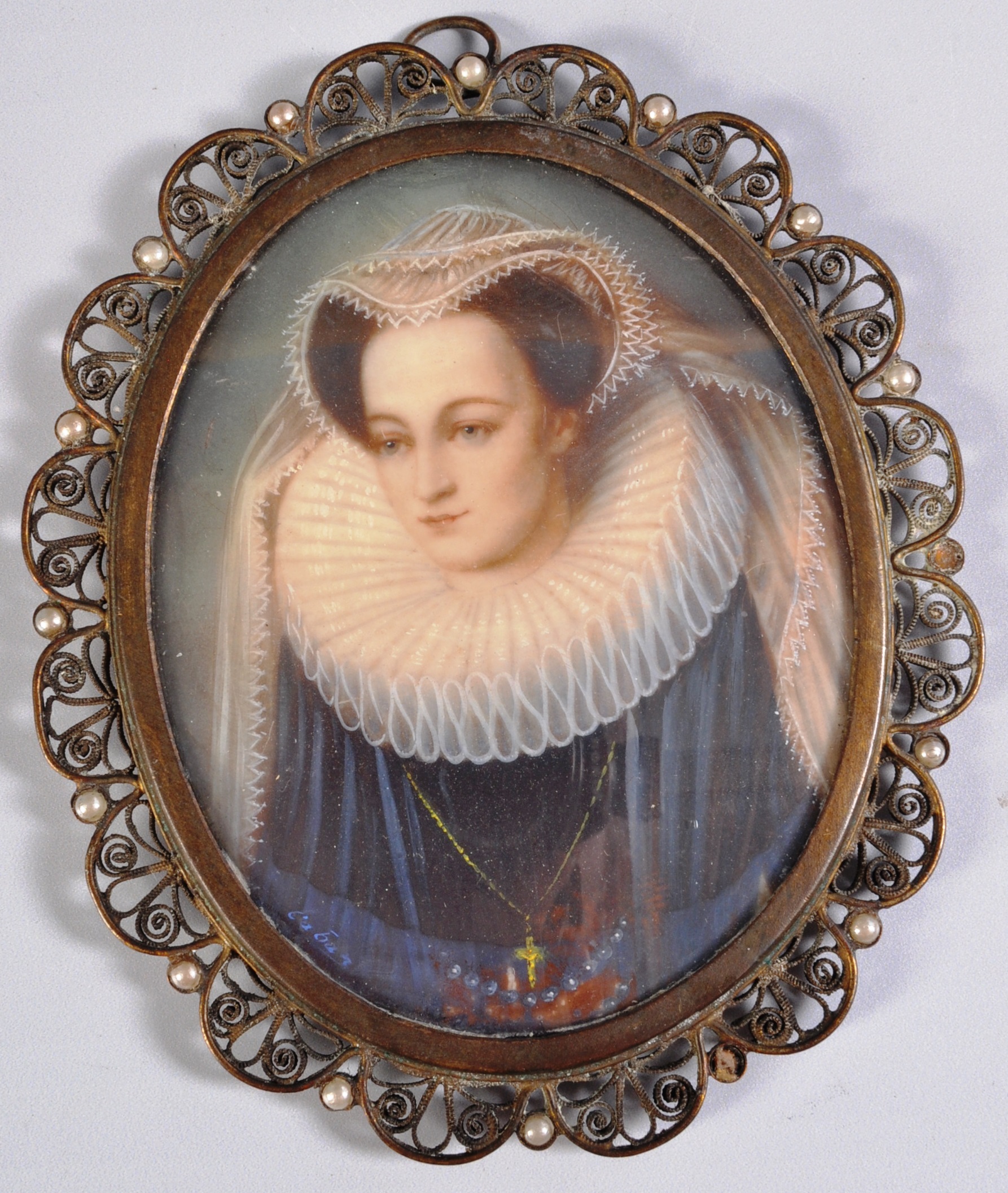
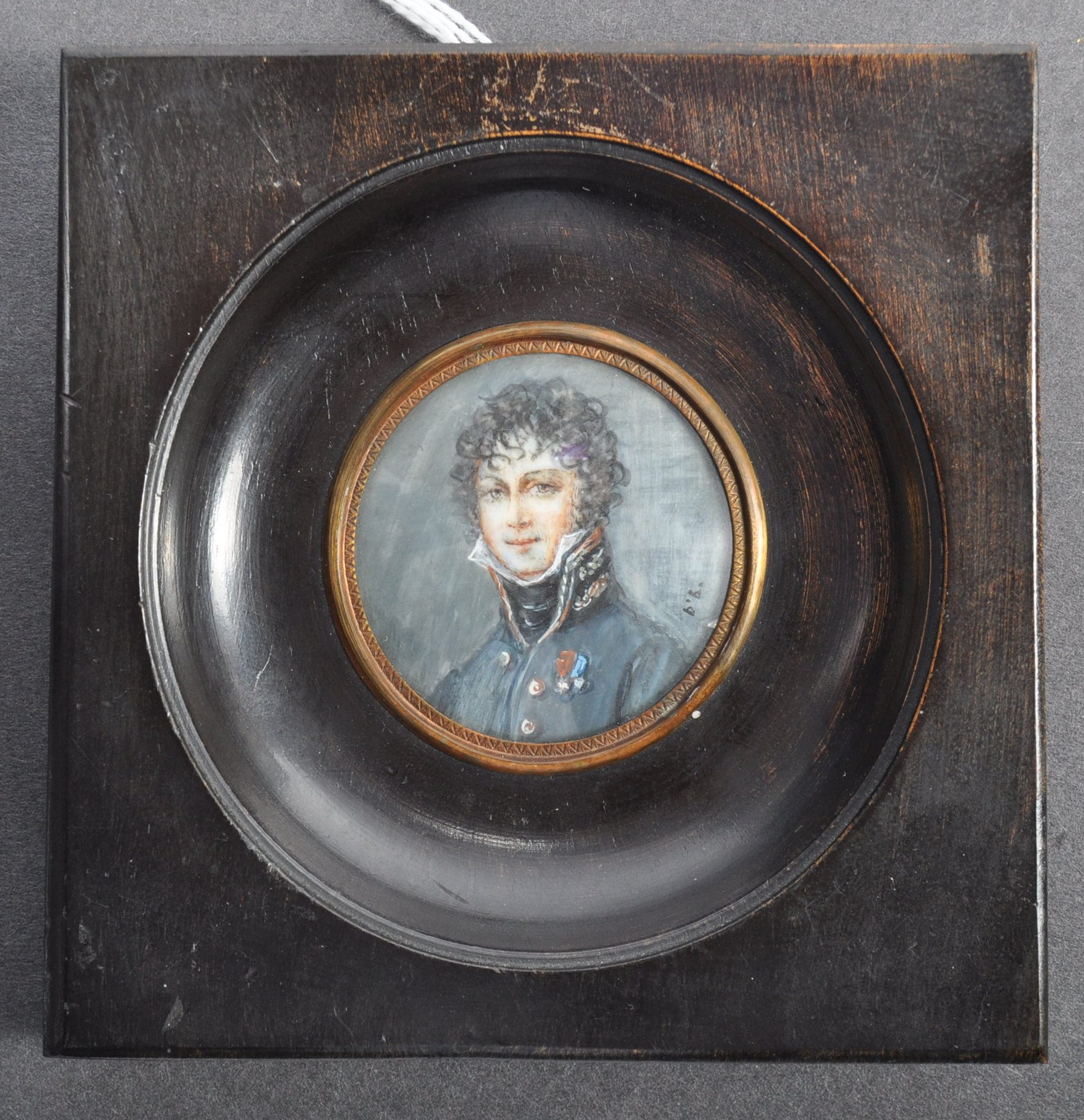
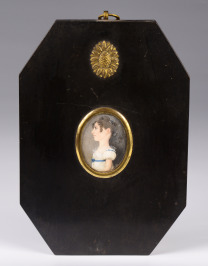
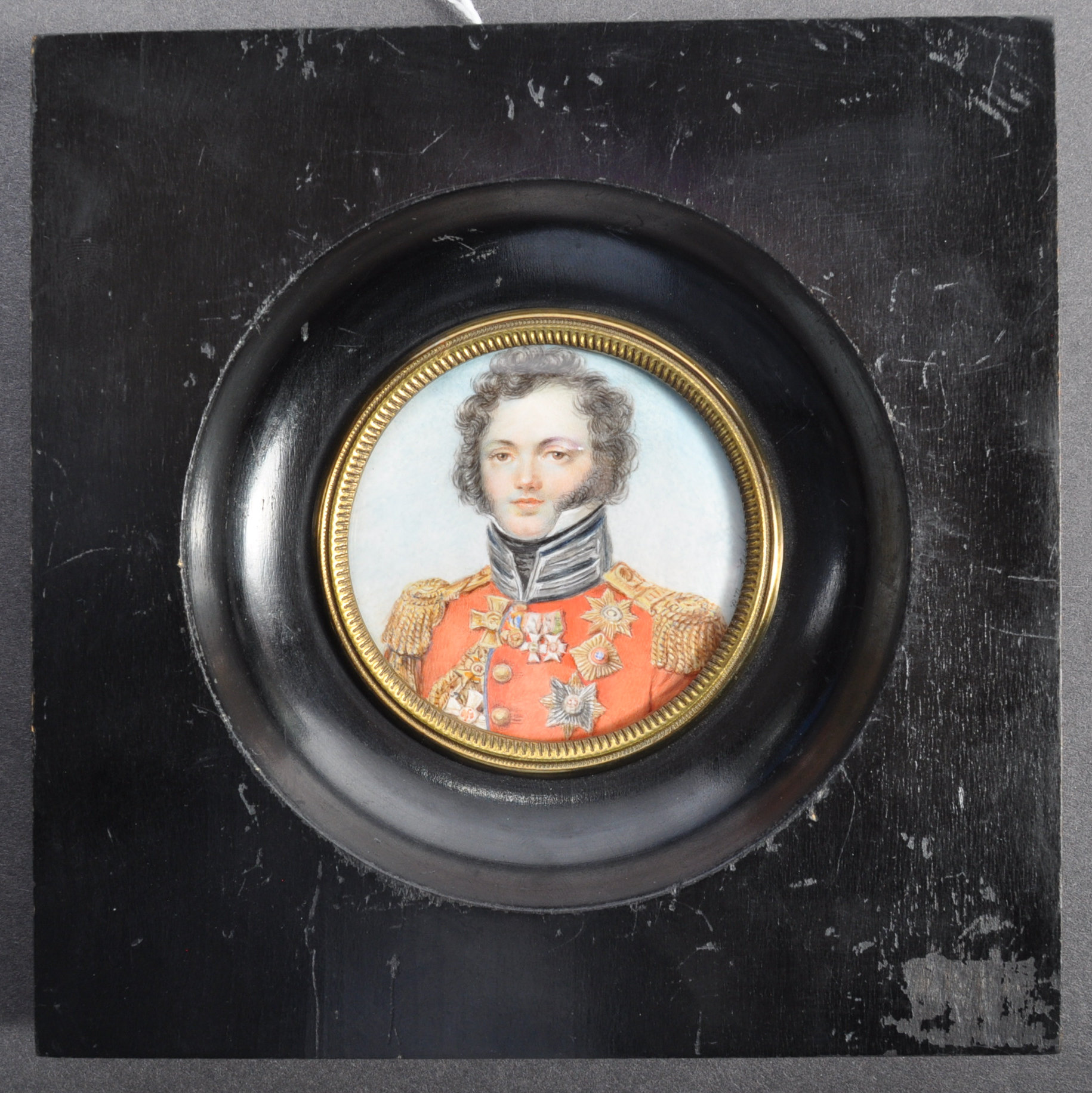
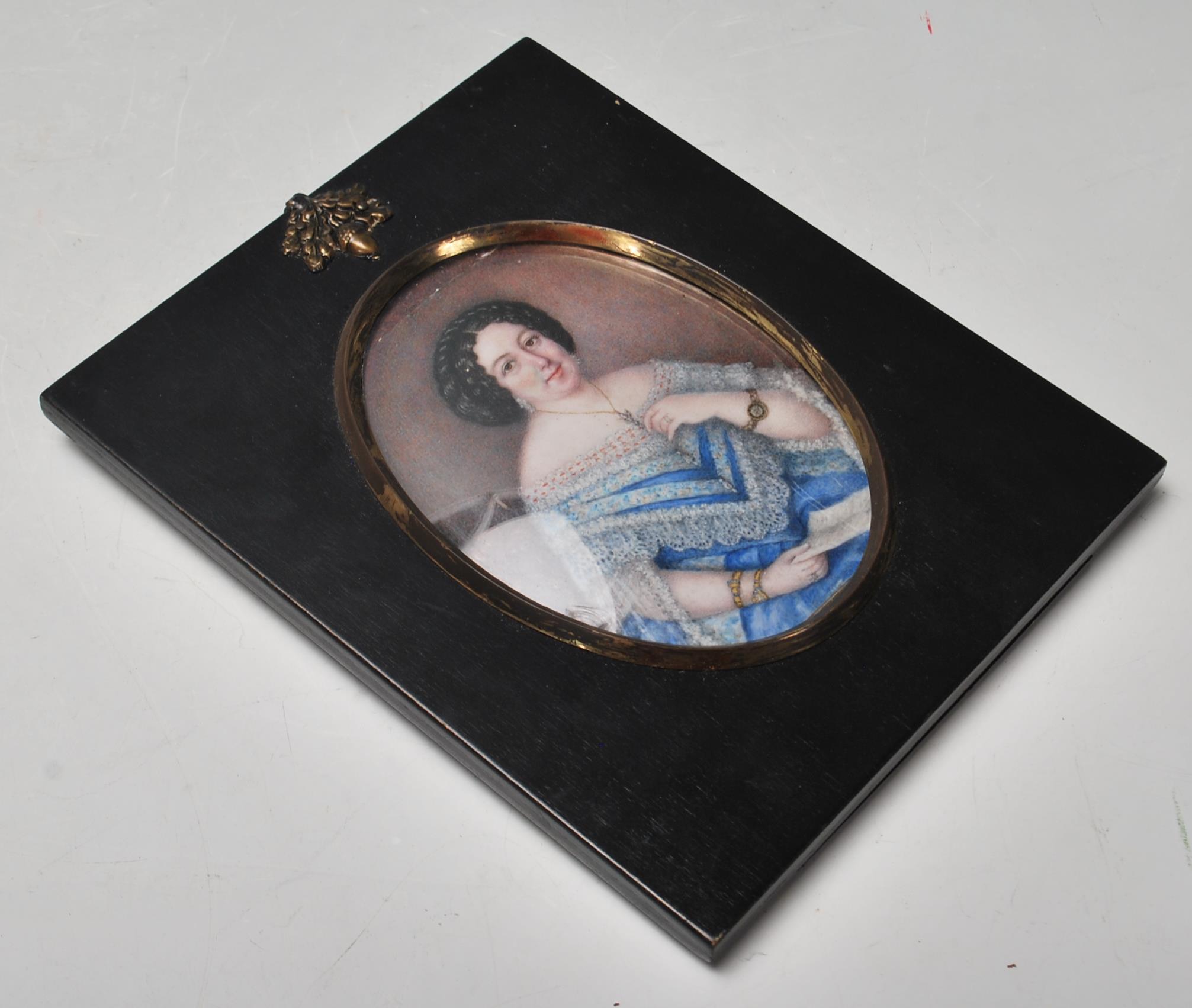
Testen Sie LotSearch und seine Premium-Features 7 Tage - ohne Kosten!
Lassen Sie sich automatisch über neue Objekte in kommenden Auktionen benachrichtigen.
Suchauftrag anlegen